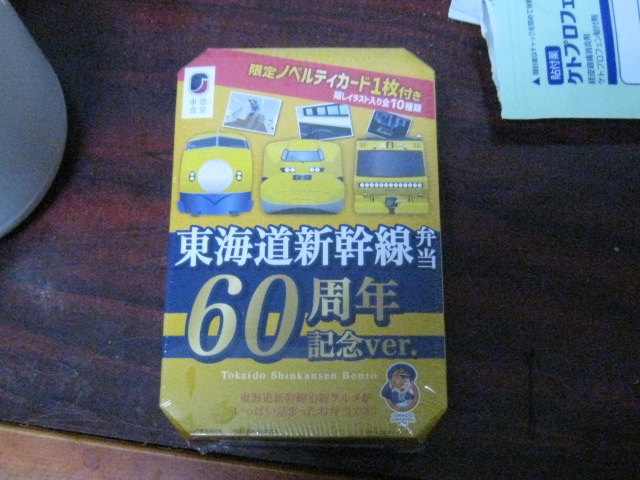ハーバード経済日誌(5)

●ゲームの理論と経済学の限界
前日の第二問の答えは、リース代がわからなくても、ジルは自分で経営し、かつマシーンを借りる選択をする、だ。計算式だけ書くと、(12万-X-1万)×0・4+(12万-X-5万)×0・2+(12万-X-9万)×0・4=-X+7万。Xは5000ドル以上、2万ドル以下であるから、リース代が最大の2万ドルでも、5万ドルの利益が見込めることになる。
では同じジルの問題で第三問。ジルが雇われマネージャーになろうか、それとも引き続き自分で経営しようかどうか迷っていたとき、株式会社「気象ニュース」から積雪予報サービスを受けないかという電話がかかってきた。もし積雪予報が100%正しいと仮定した場合、ジルはその積雪予報サービスにいくらまでだったら払うだろうか。
この答えは、順序だてて解いていく必要がある。もちろん100%正しい予報など存在しないが、ここは何でもありうる「経済ワンダーランド」。まず、積雪が120センチ以上あるとの完璧な予報があった場合、最も利益が出るのは自分でマシーンも借りずに経営するときで、その利益は12万ドル。次に積雪が60~120センチとの完璧な予報があった場合、最も利益が出るのは自分でマシーンを借りて経営するときで、その利益は5万8000ドル。最後に積雪が60センチ未満であるとの完璧な予報があった場合、最も利益が出るのは、雇われ経営者になるときで、その利益は4万5000ドルだ。
これらの金額にそれぞれの確率をかけて、予想される利益を計算する。すると、0・4×12万ドル+0・2×5万8000ドル+0・4×4万5000ドル=7万7600ドルとなる。この金額は、積雪予報がない場合で最も予想利益が高いとされる問1の5万8000ドル
を1万9600ドル上回ることから、ジルは1万9600ドルまでだったら、その完璧な積雪予報サービスを受けるだろう、というのが答えだ。
こうした問題は、ディシジョン・ツリーを描いて、整理するとよりわかりやすくなる。簡略化した図を描くことで、政策決定が容易になると考えるのが、最近の経済学の流行でもあるゲームの理論だ。世界の経済活動を、利益を最大にするためのゲームと捉える。
実は私が嫌いなのは、こうした利益至上主義だ。こういう問題を出しておいて、それはないだろうと言われるかもしれないが、数字で人間の活動を規定しようとするのは明らかに間違っている。経済学の限界もそこにある。
経済学を突き詰めれば、人件費が削れるから派遣会社の社員を多く雇用しようとか、終身雇用にすればすでに戦力とはいえない中高年にも高額な給料を払わなければならなくなるのでリストラしようとかいう議論になってしまう。それによって失われる目に見えない利点、たとえば若い正社員を大事に育てたり、安心して仕事ができる環境を作ったりするという面が軽視されるようになる。人間の顔の見えない、冷たい経済利益主義だけが社会を覆うことになってしまうのではないだろうか。
●ゲームの理論と経済学の限界2
利益を第一義に挙げる経済学を私は批判するが、複雑な人間の経済活動を簡単に説明しようと努力しているという点では、経済学を評価していないわけではない。ただ、経済学では人間の経済活動をすべて説明できない、すべきでないという観点から注意喚起したのだと考えてほしい。私から見れば、経済学は時として机上の空論にしか聞こえない。
私がここで経済学のアレコレを書いているのにもわけがある。経済学を批判するにしても、経済学を知った上で批判するのと、知らないで批判するのでは、説得力が変わってくる。そこで経済学を批判する人も経済学を一応、知っておく必要があるわけだ。
先日来展開しているスキー場経営の問題にしても、ジルは本当に利益を最大にするために判断する人間なのだろうかと考えてしまう。もちろん経済ワンダーランドでは、ジルはカネの多少で動く。
例えば、雇われマネージャーとしての利益が、「自分で経営し、かつマシーンを借りる場合の予想利益=5万8000ドル」を超える6万ドルだった場合を考えてみるといい。経済ワンダーランドでは、ジルは必ず「雇われマネージャー」を選ぶ。だがジルは、2000ドル利益が増えるぐらいなら、雇われるより自分で経営したほうがいいと考えるかもしれない。あるいはジルは、金額よりも自分で経営すること自体を自分の人生において選ぶ人間であるかもしれないわけだ。
最初の問題の答えとして私が、「もしジルが自分の利益を最大にしようと思うなら、自分で経営し、かつマシーンを借りる選択をするだろう」と書いたのもそのためだ。「自分の利益を最大にするために」ではなく、「自分の利益を最大にしようと思うなら」である。もちろん、経済理論ではこのようなマドロッコシイ答えを書く必要はない。ジルは無条件に自分の利益を最大にする選択をする単純な人間である。
この前提のもとに、明日はゲームの理論の中でも有名な囚人のジレンマを紹介する。
●囚人のジレンマ
二人の銀行強盗犯が逮捕され、警察の留置所に留置された。ところが検察当局は、二人を道交法違反容疑で立件することはできても、強盗容疑で立件するだけの証拠は持っていない。頼れるのは容疑者の自白だけ。自白が得られない場合、二人とも微罪で6ヶ月の刑ですんでしまう。
そこで当局は、二人別々に次のように司法取引をもちかけた。
「自白すれば、お前だけ釈放してやる。ただし、このまま黙秘を続けた共犯者は懲役10年だ。二人とも自白した場合は、懲役5年にしてやる」と。
さあ、二人の強盗犯は考えた。「俺の相棒が黙秘を選んだとする。もし俺が黙秘すれば6ヶ月の刑だが、自白すればすぐ釈放される。では俺の相棒が自白したとする。その場合、俺が黙秘すれば懲役10年を食らう。自白すれば5年ですむ。いずれにしても、俺は自白したほうが得だ」
こうして二人は、自分が得になるという理由で自白を選ぶ。ともに黙秘を続ければ6ヶ月の刑で済んだのに、疑心暗鬼から裏切り合って5年の刑を食らうわけだ。二人とも結局、自白を選んで終わるという組み合わせをナッシュ均衡、そしてこのゲーム自体を囚人のジレンマと呼ぶ。
石油輸出国機構(OPEC)の加盟国の中で、時々減産の取り決めを破る国が出てくるため減産計画が失敗するのも、ゲームの理論で説明しようと思えば説明できる。減産計画に従う(黙秘する)よりも、裏切る(自白する)ほうが得になるケースがあるからだ。
また寡占市場において、各社がこぞって広告・宣伝に資金を注ぐのも、囚人のジレンマが働いているといわれている。企業の宣伝・広告は、もちろん自社製品の存在や性能を知らせるという目的があるが、多くの場合、他社が宣伝・広告するから、防衛対策上自社でも仕方なくやるという側面もある。各社が宣伝・広告費を抑制する方向に動けば、広告・宣伝費を削減することができるが、疑心暗鬼からそうしたことはできない。そして結局、果てしない宣伝・広告競争が続くというわけだ。
●囚人のジレンマ2
昨日ゲームの理論の話しの中で「ナッシュ均衡」と聞いて、ある映画を思い浮かべた人は、かなり勘が鋭いか、映画通の人に違いない。その映画のタイトルは『ビューティフル・マインド』。ナッシュ均衡のナッシュとは、実はジョン・ナッシュという数学者のことだ。
映画の中では、ジョン・ナッシュをモデルにしたといわれる、天才的だが心の病んだ数学者をラッセル・クロウが見事に演じた。ジョン・ナッシュは、ナッシュ均衡をはじめゲーム理論を応用・発展させた功績を評価され、1994年にノーベル経済学賞を受賞した。
ゲームの理論は、経済学に新しい道を切り開く画期的な理論であった反面、経済学をいっそう数字のゲームにしてしまったという弊害も作り出した。数学者ナッシュの経済学賞受賞は、経済学が数学に取って代わられた象徴的な事象といえるかもしれない。
さて囚人のジレンマの特徴は、二人が釈放された後のことまで触れていないことだ。5年の刑期を終えた二人は、町で偶然に出会い、なぜ自白したのだとお互いをなじり合う。今度自白したらただではおかないぞ、ピストルの引き金を引いてやる、と脅す。協定に違反したら制裁を下すというわけだ。これをトリガー(引き金)戦略と呼ぶ。
この脅しが功を奏して、二人は次に強盗容疑で捕まったときには、お互いに黙秘を続けて6ヶ月の刑で済んだのだという。メデタシ、メデタシ。
石油輸出国機構(OPEC)も当初は協定破りが横行した。ところが、業を煮やしたサウジアラビアは制裁という意味を込めて1985年末に増産に踏み切った。そしてこれにより価格が暴落してからは、カルテル生産枠が守られるようになったとされている。
経済学は、ある条件下における極めて短期的で表面的な事象を説明するには適している一方、長期的で現実的な事象を説明しきれない場合がある。あまり短期的な数字のゲームをしていると、道を誤りかねないわけだ。そう考えると、囚人のジレンマに出てくる囚人、囚われ人になっているのは、経済学に囚われている人、あるいは経済学そのものではないかという気がするのは、単なる私の気のせいだろうか。
●国際金融論1(中央銀行の役割と独立性)
今日からは、私が比較的得意とする分野でもある国際金融の話をしていきたい。これは、私が秋学期にとったキャサリン・ドミンゲスのITF100「国際金融市場」の授業の紹介でもある。学生によるコースの総合評価(最高が5)は4・24。ドミンゲス自身の評価も4・46と高いコースだった。
国際金融市場の主役は、各国の中央銀行だ。ドミンゲスの授業でも、中央銀行の政策が市場に与える影響などを詳しく分析した。
では、その中央銀行の役割とはなんだろうか。ドミンゲスは5つの役割を挙げる。一つは政府に対する金融コンサルタントとしての役割。二つ目は、国内通貨の統制者であること。三つ目は国際通貨の管理者であり、四つ目は国内金利の統制者。最後は、銀行システムの監督者としての役割だ。
この5つの役割に加えて、中央銀行には守るべき目標が三つある。利潤を求めてはいけない、個人ではなく公共の利益を優先させる、政府から独立していることだ。
日本の中央銀行である日銀はどうであろうか。なんとなく、5つの役割と3つの目標の条件を満たしているようにも思える。しかし守るべき目標の一つである日銀の独立性に関しては依然、異論を挟む人も多いだろう。
1980年代、日本はアメリカから貿易不均衡の是正を強く迫られた。当時の大蔵省は、財政支出拡大をできるだけ抑えるためにも、金融緩和を日銀に要請した。当時の日銀総裁は大蔵省出身の澄田。あうんの呼吸で、あるいは“御用金融機関”として、過度に低金利政策を続けたために、あのバブルが発生したことはよく知られた事実だ。日銀の独立性や信頼性が大いに揺らいだのは、いうまでもない。
●国際金融論2(中央銀行の伝家の宝刀)
中央銀行が金融政策を実施する場合、その手段は3つあるとキャサリン・ドミンゲスは言う。いわば中央銀行の伝家の宝刀で、それは準備預金(Reserve Requirements)、金利(Discount Rates)、公開市場操作(Open Market Operations)だ。
その中で、潜在的に最も強力な手段は準備預金。これは、銀行をはじめとした金融機関が、預金者から集めた預金のうちの一定割合を中央銀行の当座預金(つまり利子がゼロ)に預けなければならない制度で、中央銀行はこの準備預金の割合(準備率)を決定することによって、市場に出回っている通貨供給量をかなり強烈にコントロールできる。
極端な例だが、準備率を限りなく100%に近づければ、銀行など金融機関は軒並み貸し出しができなくなり、つぶれてしまう。逆に準備率を下げてやれば、銀行は自由に使えるカネが増えるので貸し出しやすくなるわけだ。ただし、不景気のときは準備預金制度の威力は衰える。不景気で貸出先がなくなるため、準備率を下げても、貸し出しが増えないからだ。
中央銀行が商業銀行に貸し出す際の金利である公定歩合も、重要な金融政策の手段だ。金利を高くすれば銀行は借りづらくなる一方、下げれば借りやすくなり、市場にお金が潤沢に出回るようになる。短期金融市場で銀行同士がお金を貸し借りする際の金利を中央銀行が誘導することにより、市場に出回るお金の量を調整することもできる。この短期金融市場の金利をコールレートと呼ぶ。アメリカでコールレートに相当するのが、フェデラルファンドレートである。
日本では最近、公定歩合による金融政策は形骸化してしまったといわれている。というのも、日銀から低利で借りるよりも短期金融市場でもっと低い金利で借りることができる状態が続いているからだ。ただし、短期金融市場では危ない銀行にはお金を貸そうとしない。すると危ない銀行は、日銀から借りるしかなくなるわけだが、日銀から借りると自分の銀行が危ないということを公言するようなもの。結局、日銀からカネを借りる銀行はなくなってしまった。
では、そのコールレートやフェデラルファンドレートは具体的にどうやって誘導するのか。その最も一般的な例が、第3の手段である公開市場操作だ。中央銀行が国債や株式を購入することを買いオペレーション(買いオペ)、逆に手持ちの国債や株式を売却するのを売りオペレーション(売りオペ)という。
●国際金融論3(公開市場操作の仕組み)
経済記事を読んでいると、ベースマネーとかマネタリーベースという経済用語がよく出てくる。ベースマネーもマネタリーベースも同じ意味で、簡単に言うと中央銀行が市中に流している通貨のことだ。
具体的には、ベースマネーは私たちが日常的に使っている現金(紙幣や貨幣)と商業銀行が中央銀行に開設している当座預金口座の残高の合計をいう。銀行は当座預金口座からいつでも好きなときに現金を引き出せるので、現金と同じであると考えるわけだ。中央銀行はコールレートを誘導するために、このベースマネーを増減して市中のお金の量を調整する。
ベースマネーを増減するために使われるのが、前日の日記で書いた公開市場操作。中央銀行が商業銀行の保有している国債や社債、株式を購入(買いオペ)し、その代金を商業銀行の当座預金口座に振り込めば、自動的にベースマネーが増加する。市中のお金の量が増えれば、それだけコールレートは下がる。お金が豊富に出回っているときには、金利が低くないと誰も借りないからだ。
逆に中央銀行が保有している国債や社債、株式を売れば(売りオペ)、その代金が中央銀行の懐に入るため、市場からお金を回収することになる。市中のお金の量が減れば、お金を借りるために高い金利でも借りようとするためコールレートは上がるという仕組み。こうした中央銀行のオペレーション(金融調整)を公開市場操作という。
ベースマネーの増減は、一国の通貨供給量の大きさを測るための指標であるマネーサプライの増減と連動する。ベースマネーが増えれば、銀行の貸し出しも増え、貸し出されたお金の一部は別の銀行の預金に回される。すると、その銀行も貸し出しを増やし、貸し出されたお金の一部は再び他の銀行の預金に回される。このように預金の貸し出しの一部がめぐりめぐって新たな預金を創出していくことを信用創造と呼ぶ。マネーサプライは信用創造によって増えていく。
中央銀行がベースマネーを増減させることによりマネーサプライが増減する比率を信用乗数と呼ぶ。バブル経済期や好景気の時期には、この信用乗数は高くなり、カネがカネを呼ぶ熱狂的な現象が起きることは、80年代を生きた人なら誰でも記憶に焼きついているのではないだろうか。
●バブル経済の歴史1
金融の話ばかり続いたので、今日は歴史について書こう。歴史といってもバブル経済の歴史だ。バブル経済を作り出すのは、何も金融政策の失敗だけとは限らないことがわかる。
日本のバブル崩壊の傷は深かったが、世界にはもっと悲惨なバブル崩壊例がある。その悲劇的なバブル崩壊の元祖ともいえるのが、オランダのチューリップ狂とその結末であろう。
時は1630年代。国力が衰えたスペインに代わってオランダが海洋貿易で富を蓄え、栄華を誇っていた。そんな経済大国のオランダでは、トルコからヨーロッパに持ち込まれたチューリップが珍重され、金持ちの顕示欲を満たす富のシンボルとなっていった。
とくに珍種のチューリップは高値を付けるため、取引が過熱。やがては開発されてもいない架空の新品種が先物取引されるようになる。富のシンボルは強欲のシンボルでもあったわけだ。
チューリップの取引は、1634年ごろには一般市民を巻き込んだ狂乱状態となった。たとえば、球根一個と五万平方メートル近い土地が交換されることもあったという。現代の私たちの目から見れば、球根一個と五万平方メートルもの土地が等価であるなどとは想像もできないが、当時はそれが常識だったのだ(猫の額ほどの土地に何億円も払う現代の日本人も笑うことはできない)。
しかし、チューリップの狂乱も長くは続かなかった。1637年2月、チューリップ市場は突然暴落、投資家は皆パニックに陥った。債務不履行による不良債権が急増。不動産などを担保にチューリップに投資していた人の破産が相次いだ。
チューリップのバブルは完全にはじけ、投機による一攫千金の夢は砕け散った。チューリップは文字通り「時代のあだ花」となったわけだ。
●バブル経済の歴史2
大海に浮かぶ泡のようにはかないという意味を込めたバブル(泡沫)――。その語源となった事件も忘れることはできない。18世紀初頭のイギリスで起きた南海泡沫株事件だ。
事件の背景にあったのは、ヨーロッパ列強の醜い利害関係が浮き彫りになったスペイン継承戦争(1701~14年)。その戦費負担などで乱発した国債の利払いに窮したイギリス政府は、1711年に政府の肝いりで設立した南海会社を利用することにした。
具体的にどんなことをしたかというと、イギリス政府は、戦争が終結したときにイギリスが獲得することになっていたスペインの中南米植民地(南海地方)との貿易独占権を南海会社に認める代わりに、大量の国債を引き受けさせた。
バックにイギリス政府がついているということで、投機熱を煽り、南海会社の株はうなぎのぼり。思惑ばかりが先行し、1720年に1月128ポンドだった株価は8月には1000ポンドにまで高騰した(日本のバブル期に政府“ご推奨”のNTT株が急騰した現象と非常によく似ている)。
しかし、南海会社の経営自体はどうかというと、それほどいいものではなかった。収益改善の見通しが立たないことが判明すると、同社の株は同年9月に値崩れしはじめ、同12月には株価は124ポンドまで暴落した。これにより、同社株に投資していた投資家は大損し、破産者が続出した。
これは、南海会社の株式が上がることを前提にして国債を引き受けさせた国家的な詐欺にほかならなかった。国民の非難の矛先は、この不正事件にかかわった政府高官に向けられ、時の内閣も倒壊した。この政治的混乱をうまく利用してのし上がったのが、ロバート・ウォルポール。「南海泡沫株事件」の処理に政治的手腕を発揮して名声を高め、1721年から42年まで政治の実権を掌握、事実上のイギリスの初代首相とみなされている。
●バブル経済の歴史3
近年のITバブルが技術革新によってもたらされたのは、よく知られている。インターネットなどITの技術革新によって、経済の未来はばら色になったように思えてくる。夢が夢を呼び、それが投機を煽るわけだ。しかし、技術革新のバブルは何も20世紀以降の専売特許ではない。
19世紀のイギリスでも、技術革新がもたらすだろう未来社会に対する夢が無限に広がり、株式バブルとなった。その技術革新とは鉄道だ。
1820年代に実用的な蒸気機関車が登場、1830年にリバプール・アンド・マンチェスター鉄道が開業すると、イギリスでは本格的な鉄道時代が幕開けた。鉄道網が次々と整備され、大量の人や物を迅速で比較的安価に、気象条件にも左右されずに運ぶことができるようになったことから人々は、「鉄道は人類の生活を根本的に変える革命だ」と、もてはやした。
このブームに乗って、ジョージ・ハドソンという「鉄道王」も現われた。彼は新線を敷設する一方、既存の鉄道会社を買収することにより、事業を急拡大。加えて、巧みな弁舌と演出で一般投資家の投機熱をあおって資金を集め、その集めた資金で事業をさらに拡大していった(どこかで聞いたような話ですね。エンロンとか)。
ところが1840年代後半になると、ハドソンの化けの皮も剥がれてくる。おりしもイギリスの景気が悪化、永遠に続くと思われたハドソンの拡大路線に黄信号がともる。すると鉄道熱も、これまでの熱気がウソだったかのように急速に冷え込みはじめた。これに、ハドソンに対する不正疑惑が追い討ちをかけ、鉄道バブルはもろくも弾け飛んだ。
結局、歴史は繰り返すというのが、今日の教訓。
これで「三つのバブルの物語」を終わります。
●国際金融論4(信用創造)
国際金融論3で取り上げた信用創造についての説明が不足していたと思うので、今日は詳しく述べたい。ドミンゲスの授業でも、かなり時間をかけて説明された。
信用創造とは、銀行組織全体が、貸し出しを通じて、最初に預け入れた預金の何倍かの預金を作り出すことだ。預金創造とも呼ばれる。しかしこれだけでは、何のことだかわからないと思うので、具体例を挙げる。
企業や個人が新規に預金100万円を銀行Aに預け入れたとする。すると銀行Aは、新規に預かった預金の一部を払い戻しなどに備えて現金の形で手元に残しておかなければならないが、残りを貸し出しに回すことができる(国際金融論2の準備預金と準備率参照)。現金準備率(支払いに備えて手元に保有しておく現金÷受け入れた預金)を0・1(10%)とすると、新たに90万円の貸し出しができるわけだ。
このとき企業Xが銀行Aから90万円を借り、企業Yに支払いを行うと、企業Yの取引銀行である銀行Bは90万円の預金を受け入れることになる。すると、銀行Bも81万円の貸し付けが新たに可能となる。企業Yが銀行Bから81万円を借り、企業Zに支払いを行うと、銀行Cに81万円の預金が入る。銀行Cは・・・。以下、同様にこのプロセスが繰り返される。
このようにして、創出される預金総額は100+100×(1-0・1)+100×(1-0・1)(1-0・1)+100×(1-0・1)(1-0・1)(1-0・1)・・・・・=100÷0・1で1000となる。つまり、現金準備率が0・1の場合は当初の預け入れ預金金額100万円の10倍(現金準備率の逆数倍)である1000万円の預金が生み出されたわけだ。この現金準備率の逆数(0・1の場合は10)を信用創造乗数、または預金創造乗数と呼ぶ。
もっとも、これは理論上の話。現実には、銀行は貸出限度額まで貸し出すことはあまりないし、企業も借り入れた資金をすべて預金するとはかぎらない。その場合には、信用創造乗数は、理論値よりもはるかに低くなる。
●国際金融論5(おカネと金利)
国際金融論3(公開市場操作の仕組み)で市中のお金の量と金利の関係について「お金が市中にあふれているときには金利が低くないと借りてくれない」と簡単に書いたが、実は金利とお金の量の関係についてはもっと複雑な要因が絡んでくる。
具体的には4つの要因がある、とドミンゲスは言う。その要因を説明する前に、お金に対する需要が、お金の量や金利とどういう関係があるかを述べたい。
まず、お金に対する需要と金利の関係は、金利が高騰したときはお金に対する需要量も低下し(わざわざ借りてまでお金を持とうとは思わなくなる)、金利が下落したとき需要量は増加する。このことは経験的にもわかるだろう。すると、縦軸に金利を、横軸にお金の量(貨幣残高)をとると、お金に対する需要曲線は右肩下がりになる。
一方、現金と預金で構成される貨幣供給(マネーサプライ)は、中央銀行によってコントロールされると考えられるので、グラフ上では垂直として表される。この垂直のマネーサプライのラインを右に動かす(つまり供給量を増やす)と、お金に対する需要曲線との交点も右に移動する。その交点を以前の交点と比較すると、金利が下がることがわかる。逆にマネーサプライのラインを左に動かす(つまり供給量を減らす)と、今度は金利が上がることがわかる。
このように通貨供給量を増やすと金利は下がり、減らすと金利が上がるという関係がグラフ上で確認できる。この現象を流動性効果(Liquidity Effect)と呼ぶ。これが第一番目の要因だ。
第二番目の要因は、所得効果(Income Effect)。人や会社によるかもしれないが、企業や個人の所得が増えれば、それだけお金を保有したいと欲するはずだと考える。別の考え方をすれば、所得が増えたのでもっといいもの(高価なもの)を買おうとするためお金を欲しがると解釈してもいいかもしれない。この欲求は需要曲線を右にシフトさせるため、垂直のマネーサプライラインとの交点は上に移動、金利が上がる。
第三番目の要因は、価格効果(Price Effect)。物価が上がると企業や個人はそれだけお金を必要とするので、需要曲線は右にシフト、金利が上昇する。
第四番目の要因は、第三番目と似ているがもっと効果が大きいインフレ効果(Inflation Effect)。インフレになれば当然、企業や個人はもっとお金を必要とするので、需要曲線は右にシフト、金利が上がる。
では、実際に中央銀行がマネーサプライを増やしたらどうなるか。第一番目の要因である流動性効果により金利は下がる。ところが市中にカネが増えると、カネよりもモノの価値が相対的に高くなるため物価が上がり、企業や個人の所得も増加、それが高ずるとインフレになる。所得効果や物価効果、インフレ効果により金利は上がる。当初、金利を下げる働きをしたマネーサプライの増加が実は金利を上げることにつながることがわかる。
果たして、マネーサプライを増加させる前の金利水準より、結果的に金利が高くなるのか低くなるのかは「神のみぞ知る」だ。常に市場に目を配らなければ、逆の効果を生み出すことがある。金融政策はタイミングが極めて大事になるのはこのためだ。
●グリーンスパンは何をするのか?
さて、これまでの基本的な経済事象を踏まえたうえで、ドミンゲスのコースで実際に出された中間試験を解いてみよう(今回は英語の勉強も兼ねて、原文を書きます)。
1) On October 20, 1987 (the day after the stock market crash), Fed Chairman Greenspan issued an extraordinary public statement, “the Federal Reserve, consistent with its responsibilities as the nation’s central bank, affirmed today its readiness to serve as a source of liquidity to support the economic and financial system.”
(a) What are the policy tools that the Fed has at its disposal, to follow through with this “liquidity”assurance?
(b) How, specifically, can the Fed go about implementing its policy tools?
(c) How would you expect these actions to influence the dollar exchange rate (assuming no changes in foreign monetary policy)?
(a)の前半部分は簡単だ。国際金融論2で述べた公開市場操作、金利政策、準備預金という三つの政策手段(tools)を書けばいい。問題は後半の「流動性の確保を完遂するため」と訳せる部分。
前日株価が下落したのを受けての発表だったことに留意しなければならない。一番恐ろしいのは、先行き不安からパニックになること。銀行など市中に潤沢に資金がないと、不測の事態に対応できなくなる。そうした不安を払拭するためにも、資金が十分に市場に出回っているようにしなければならない。
そのためにグリーンスパンができることは、マネーサプライを増やすことだ。そのマネーサプライを増やすには、買いオペをする、金利を下げる(あるいは貸し出しを増やす)、準備率を下げる、の三つの政策を実施すればいい。
(b)は三つの政策を具体的に論じればいい。買いオペとは実際に何を実施し、実施するとどうなるのか、金利を下げる(あるいは貸し出しを増やす)とどうなるのか、準備率を変動させるとどうなるかを説明する。
(c)の解答も流動性がポイントだ。グリーンスパンは「流動性確保」のため、マネーサプライを増やす方針を打ち出した。つまり金融緩和策だ。
国際金融論5で書いたように、マネーサプライの増加は、流動性効果により短期的には金利を下げる。金利が下がると、アメリカ・ドル建て財産(ドル預金など)は、他国の通貨建て財産に比べて魅力が薄れる(リターンが少なくなるから)。するとドルに対する需要は減り、ドルが他国通貨に対して安くなる。
ただし、マネーサプライの増加により物価が上がったり、所得が上がったりすれば、金利は上昇に転じる。また今回の場合、グリーンスパンは株価暴落を受けて緊急避難的にマネーサプライを増加するわけだから、金利が多少下がったとしても為替に対する影響は少ないとみられる。
●浪費大国の苦悩1
ドミンゲスの中間試験第二問。
(2) The fictional country of Freespendia (浪費大好き国) has had a recent history of hyperinflation, frequent devaluations, and large government budget deficits. In order to improve its international reputation and encourage foreign capital inflows, the government of Freespendia is thinking about switching to a currency board system.
(a) How is money created in a currency board system?
(b) Why are currency boards seen as protection against devaluation?
(c) What problems is Freespendia likely to face with a currency board system?
(d) Under what circumstances would you recommend that Freespendia move to a currency board system?
この問題を解くには、カレンシーボード制度について説明しなければならない。これは、自国通貨を主要国の通貨,実際にはアメリカ・ドルと一定の為替レートで無制限に交換することを金融当局が保証し,これを担保できる以上の外貨準備を保有する制度。事実上の固定相場制とすることで,為替相場や物価の安定を目的とする。
為替レートの安定を手に入れる代わりに金融政策を放棄するため、インフレになろうと、景気が悪くなろうと、金利を上げたリ、下げたりすることができない。香港がこの制度を実質的に採り入れている。
さて、カレンシーボード制度の下ではどうやって貨幣が創造されるかという問題(a)の答えだが、国際金融論4の信用創造のことを思い出してくれればよい。信用創造と貨幣創造は同じ意味。基本的にカレンシーボード制度においても、同じことが起きる。誰かが銀行に預金を預けると、信用創造によって、それが何倍かの預金に膨らむ。
唯一の違いは、カレンシーボード制度下では、商業銀行が発行するチェックのようなプライベートマネーは、中央銀行は関知しないということだ。通用するのは、その国の通貨(紙幣や硬貨)だけ。もし外貨が欲しければ、商業銀行でチェックなどを現金(紙幣や硬貨)化し、それをもって中央銀行に行き、外貨と固定相場レートで取り替えるしかない。
次に(b)の解答。カレンシーボードが発行する通貨は、すべて外貨(ドル)準備で裏付けられている。たとえば外貨準備が1万ドル減れば、ベースマネーも1万ドル分減少。外貨準備が1万ドル増えればベースマネーも1万ドル増加する。このように外貨準備に対するベースマネーの比率はいつも変わらないので、固定相場が維持できる、つまり通貨切り下げの必要がなくなるわけだ。
●浪費大国の苦悩2
(c)は、カレンシーボード制度の問題点は何かという問題。為替安定と引き換えに金融政策を放棄したツケは結構重い。まず、先日すでに述べたが、金融政策が講じられないため、景気が下向きになったときでも金融緩和策ができない。
第二に、セイフティーネットがないことだ。商業銀行が短期資金を必要としても、中央銀行は流動性を確保するためにマネーサプライを増加することはできない。不況で取り付け騒ぎが起きても、中央銀行が動けなくなってしまう。そうした金融危機の場合は、カレンシーボード制度は事実上崩壊する。
第三には、自国通貨の価値がドルと連動させることにより実力以上に上がってしまうことだ。カレンシーボード制度を導入した「浪費大好き国」は、もともとインフレになりやすい体質がある。もし「浪費大好き国」でアメリカよりも高いインフレ率が続けば、その通貨価値は過剰に高くなる。そうなれば輸出競争力は落ち、相対的に安くなった輸入品が増加、貿易赤字が拡大する。
(d)では、逆にカレンシーボード制度の利点を挙げた上で、どういう場合に同制度に移行すべきかを述べればいい。
第一の利点としては、カレンシーボードは複雑な金融政策をしなくていいため運営が簡単なことが挙げられる。第二には、カレンシーボードは政府に対して責任のある財政政策を強いることができる。とにかく一切金融政策を行わないわけだから、国債を買うこともしない。政府は自分の責任で借金をしなければならない。第三の利点は、カレンシーボードの設置により通貨切り下げの可能性が低くなるので、それだけインフレを抑制する効果があることだ。
こうした長所や短所を考慮すると、金融システムが比較的健全に機能している国でなければ、カレンシーボード制度を導入すべきでないことがわかる。金融政策を行わないため、商業銀行の責任が高まるからだ。それに、財政当局にとってもかなりの強い意志と規律が求められるため、よほどの覚悟がなくてはならないだろう。すでに事実上導入している香港は別にして、インフレで通貨価値の下落が止まらず、国際的信用を失った場合の最後の方策として、カレンシーボード制度を試してみるのもいいかもしれない。
●不胎化って何だ!
ドミンゲスの中間試験第3問。
(3)“Sterilized intervention operations are futile.”
(a)Describe the mechanics of a sterilized intervention operation.
(b) Under what circumstances would you agree with the quote?
(c) Under what circumstances would you expect a sterilized intervention operation to influence exchange rates?
(d) How would your answers to parts (a), (b) and (c) change if the intervention operation were non-sterilized?
「不胎化介入(不胎化政策)は無駄である」――。一体何のことか。この文章を読んでSF「スタートレックシリーズ」に登場するボルグの“Resistance is futile(抵抗は無駄である)”という言葉を思い浮かべたのは私だけだろうか。もちろんこの問題は、スタートレックとはまったく関係ない。
経済学用語の中でも不胎化政策ほど奇妙な言葉を私はほかに知らない。為替相場への市場介入の際,自国内の通貨量を変動させないようにオペレーション等で相殺することをいう。不毛にする、不妊化するという意味のsterilizeという単語を使っているので、かなりイメージ的に変な感じを受ける。この単語を使っているのは、介入しても何も生じないように市場にとってニュートラルな措置を施すという意味がある。
なぜそういう措置をとるかというと、為替への介入がマネーサプライの増減に影響を与えないために実施する。自国通貨のレートを変えるためにマネーサプライを増減させてしまうと、物価の乱高下や金利の上下動につながってしまう可能性がある。それを防ぐためだ。
では、具体的にどうやるのか。それが(a)の答えでもある。
ポイントは、為替介入といっても実際は買いオペや売りオペとほとんど変わらないということ。唯一の違いは、国内の国債の変わりに外国の国債を買ったり、売ったりする点だ。
たとえば、米国がドル安にしたい場合の不胎化介入とは次のようなものだ。まずFEDは、2億ドル相当の日本政府発行の国債を買う。手持ちのドルを使うので、市場に2億ドルが増えることになるが、これを相殺するため同時に2億ドル相当の米国債を市場に売り、市場から2億ドルを引き上げる。こうすればベースマネーに変化はない。不胎化したわけだ。
ドル高にしたいときは、その逆をする。つまり、手持ちの日本の国債を売り、同額相当の米国債を市場から買う。しかし実際にドル高になるか、あるいはドル安になるかは(a)では求められていない。
その答えは(b)と(c)とも絡んでくる。
●不胎化と非不胎化
(b)と(c)は裏返しだ。どういう場合に不胎化介入は無駄になるか、つまり為替に影響を与えないのか、を問うているのが(b)。逆に為替に影響があるのはどういう場合かを問うているのが(c)だ。
この問題は(C)から答えたほうがわかりやすいと思う。不胎化介入が為替に影響を与えるには二つのケースが考えられると、ドミンゲスは言う。一つはポートフォリオ・バランス理論(ポートフォリオとは、簡単に言うと、手持ちの有価証券の内訳のこと)で、もう一つはシグナリング理論だ。
ポートフォリオ理論によると、たとえばFedがドル高にするために不胎化介入した場合、手持ちの外国債を売り、米国債を買う。すると市場には、米国債がその分吸い上げられ、外国債が増える。市場が最適なポートフォリオ・バランスを常に保とうとし、なおかつ米国債と外国債は完全な代替財でなければ、外国債に対するリスクが増える。Fedの保有する米国債は増え、外国債は減るので、相対的に米国債のリスクが減るとも考えられる。米国債のリスクが下がれば、それだけ米国債を持っていようとする人が増えるわけだから、ドル高に流れるはずだ。
シグナリング理論は、不胎化介入が中央銀行の将来の金融政策の前兆(シグナル)であると信じた場合に為替に影響が出るというもの。ただし、市場が中央銀行(アメリカの場合はFed)を信頼し、市場の側に立っているとみられていることや、中央銀行が内部情報(他国の為替介入や将来の財政・金融政策の情報)を持っていることが前提だ。たとえば市場が、Fedが外国債を売り、米国債を購入する不胎化介入を、将来の金融引き締め(インフレ防止)策に備えてドル高に誘導する意図があると判断した場合、ドル高に動く。
そこで(b)の答えだが、この二つの理論の裏返しとなる。すなわち、ポータフォリオ理論の前提となる米国債と外国債が完全な代替財でない場合や、シグナリング理論では中央銀行が市場の側に立っておらず、信用置けない場合、介入が将来の金融政策を反映したものではない場合などを挙げればよい。
実はこの問題の答えは、ドミンゲス自身が書いた『為替介入は効果あるのか?』という論文の内容そのものだ。学生はこの本を買わされ、ドミンゲスに印税が入る仕組みになっている。洋の東西を問わず、このシステムは健在だ。
(d)の問題は、日本語に訳すと「非不胎化政策」だった場合には答えがどう変わるか、という内容。非不胎化政策(介入)は公開市場操作と同じ。基本的にベースマネーと金利に影響を与え、その範囲で為替に影響が出ると書けばいい。
不胎化介入は現実的に行われている介入であることが多い。
●日米通貨当局の思惑
ドミンゲスの中間試験最後の問題。
Over the course of the first four months of this year the value of the U.S. dollar fell by over 40% relative to the Japanese yen. Starting in May, the dollar gradually strengthened against the yen, and the current dollar-yen rate is now approximately back to the level it started at in the beginning of the year. This question asks you to consider the monetary and intervention policies that were available to the Bank of Japan (BOJ) and the Fed in April when the dollar was at its lowest value relative to the yen. (NOTE: Do not tell me what the BOJ and Fed actually did; tell me what they could have done given the objectives described below and what you know about the relationship between monetary policy, intervention policy and exchange rates.) Provide short-run analyses assuming prices are (temporarily) fixed.
(a) Assume that the BOJ wants to reduce the value of the yen relative to the dollar, what monetary policy actions can they take to accomplish this? Provide step-by-step details on how the BOJ monetary policy change will lead to a change in the dollar-yen exchange rate.
(b) Assume that the Fed also wants to reduce the value of the yen relative to the dollar, what monetary policy actions can they take to accomplish this? Provide step-by-step details on how the Fed monetary policy change will lead to a change in the dollar-yen exchange rate.
(c) Assume that both the BOJ and the Fed want to reduce the value of the yen relative to the dollar, but they also do not want to change the size of their respective monetary bases. How might both central banks intervene in the foreign exchange market in order to influence the dollar-yen exchange rate without changing their respective monetary bases. Describe in details how the Fed and the BOJ intervention operations will lead to a change in the dollar-yen exchange rate.
この問題だけは、現実に即した応用問題のようになっている。止まらない円高ドル安に日米の中央銀行はどう対処するのかについて答える問題だ。
(a)では、日銀がドル高円安にしたいと考えている。円の価値を減らすには、日本国内のベースマネーを増やせばいい。円がたくさん市場に出回れば、つまりインフレに動けば、カネの価値がそれだけ減るからだ。そのためには、買いオペ、利下げ(貸し出しをしやすくすること)、預金準備率引き下げの三つの方法がある。
また短期的には、ベースマネーの拡大は流動性効果により金利の低下につながる。日本の金利低下は、もし米国の金利がそのままなら、円の価値を減ずるので円安ドル高に働く。
(b)は、Fedもドル高円安を望んでいる場合だ。(a)と逆で、Fedはベースマネーを減らせばいい。売りオペ、利上げ、預金準備率引き上げの三つの方法がある。
また短期的には、ベースマネーの縮小は流動性効果により金利の上昇につながる。米国の金利上昇は、もし日本の金利がそのままなら、ドルの価値を高めるのでドル高円安に働く。
●日米通貨当局の思惑2
(c)は日米の通貨当局がともにドル高円安を望んでいるが、ベースマネーを変動させたくない場合だ。これは現実的によく起こる問題だ。ベースマネーを変えてしまうと、両国の経済に大きな影響があるからだ。為替のために経済を犠牲にするのは本末転倒になってしまう。
そこで登場するのが、前の問題で解いた不胎化介入だ。不胎化介入なら、ベースマネーを変えることなく、為替に影響を与えることができる。
具体的には、Fedは日本の(円建て)国債を売り(ドルを市場から吸い上げ)、米国債を買う(ドルを市場へ戻す)。日銀は米国債を買い、日本の国債を売る。こうすればベースマネーは変わらずに、為替レートに変化を生じさせることができる。
どのように変化が生じるかは、すでに論じたようにポートフォリオ理論とシグナリング理論で説明できる。簡単に説明すると、ポートフォリオ理論では日本の国債が市場に増えるため、リスクが上がり価値が下がる。また日米通貨当局が市場から信用されている場合には、日銀が将来金融緩和策を実施し、Fedが将来金融引き締め策を実施する兆し(シグナル)だと市場は理解し、ドル高円安へと動く。
さて、これでドミンゲスの中間試験の問題はすべて解説した。ただし、これを全部解かなければならないわけではなかった。全部で四問中、たった二問だけ解けばいいのだ。時間は90分。
なんだ、たいしたことないなと思う人は、あえてハーバードの大学院で勉強する必要もないほど国際金融のことを知っている人。難しくて興味がないと思っている人は、ご安心ください、ハーバード・ケネディスクールには、国際政治から世界経済まで公共の利益や公共政策に関係する講座はたくさんあるので、自分の興味がある好きな学科を取ればいいだけのこと。実際ミッドキャリアの学生の中には、経済など一教科も取らずに卒業する人も多い。
次に紹介するマービン・キャルブ教授らのメディア論も経済とはほとんど関係ない授業だ。
●メディア論1
マービン・カルブ教授とトマス・パターソン教授によるPPP100「報道と政治と公共政策」のコースは、難解で頭が痛くなるような問題を時々解かなければならない経済のコースに比べると、私にはちょっとした息抜きとなった。授業も週一回の火曜日午後2時から4時までの二時間だけ。現役ジャーナリストのパネラーが参加したり、昔の報道番組を見て議論したりするなどディスカッションを中心とした授業だった。
60人ほどいる学生は、5~6人の11グループに分けられ、授業とは別に週一回必ずミーティングを開き、その週の最も重要なニュースを選び、次の授業までにそのニュースが最も重要だと判断したプロセスや理由をレポートにして提出することを義務付けられた。成績はテーマを決められた3つのペーパーとクラスでの発言、それに毎週出すレポートの出来(各20%の構成率)で決まった。
授業のテーマは次のとおりだった。
第一週:報道の自由と責任
第二週:テレビの隆盛とその力
第三週:米議会の挑戦と問題点
第四週:新しいメディア技術――その機会と危険性
第五週:O.J.シンプソン事件と裁判取材
第六週:大統領と報道機関
第七週:ウォーターゲート事件からホワイトウォーター事件まで
第八週:1996年大統領選
第九週:選挙と有権者の不満
第十週:人種差別と公民権運動
第十一週:ヴェトナム戦争とペンタゴンペーパー
第十二週:湾岸戦争――ヴァーチャル戦争
第十三週:国際情勢をどう報道するか
第十四週:報道と政治――残された問題
ペーパーは、最初の締め切りが第六週までで、テーマは「メディアとは何か」。二つ目の締め切りが第十週までで、テーマは「為政者は近年のジャーナリズムの変化によって得をしたか損をしたか」。最後の締め切りは第十四週までで、ベン・ブラドリーの『わが生涯』、クラウドとオルソンの『モローの子分たち』、ジェームズ・ファロウの『臨時ニュース』の三冊から一冊を選び、それを基にメディアの総論を書け、というものだった。
明日からは授業内容について紹介します。
© Rakuten Group, Inc.






